Asparagus is a wonderful addition to any meal, no matter the weather or time of the year. Yet, it's also one of the more controversial vegetables. Like brussel sprouts and cauliflower, many people view asparagus with disdain for its slimy texture, bitter flavor, and sometimes hard stalks. However, these complaints are usually generated by boiling the asparagus or baking it incorrectly.
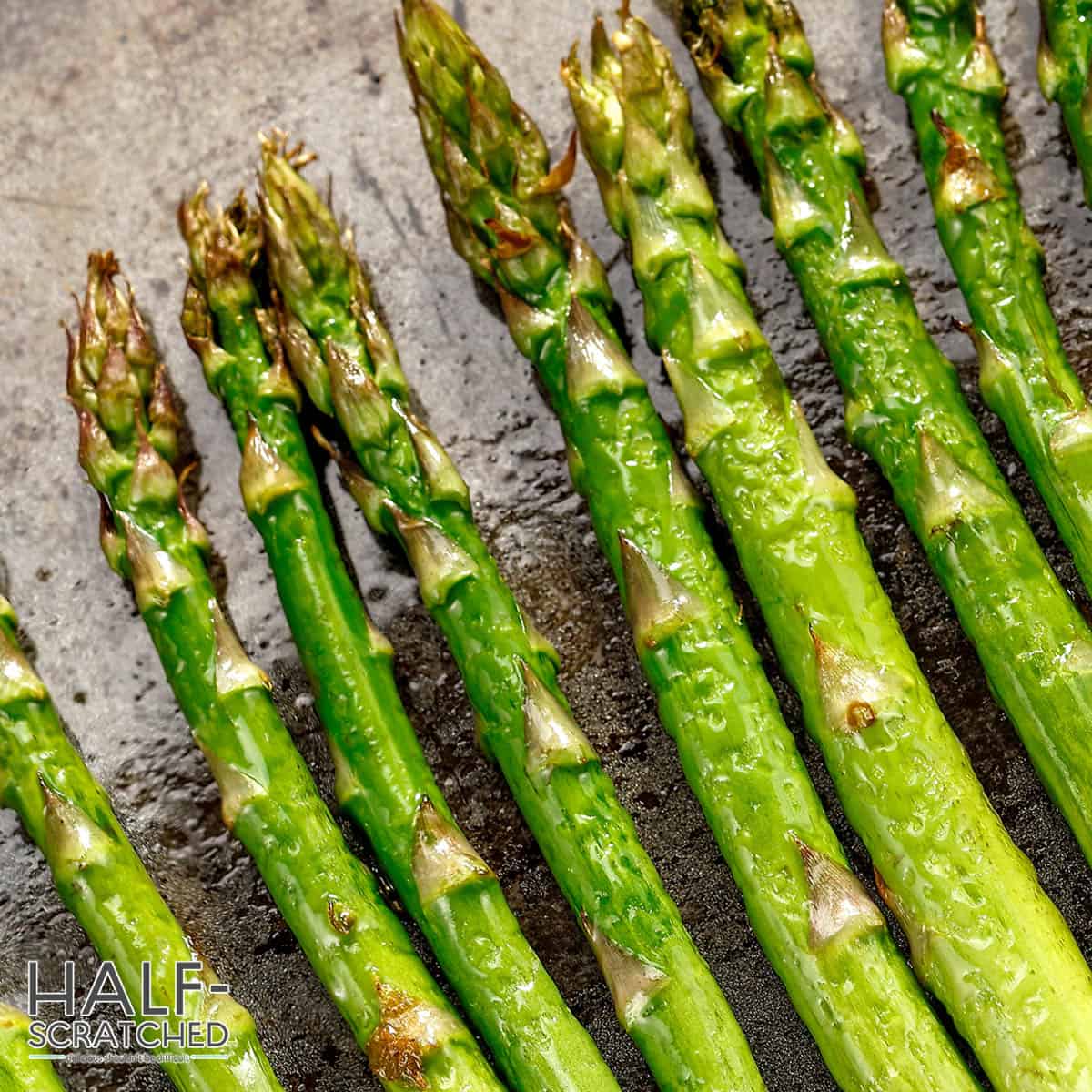
To make asparagus that's rich and roasted, bake the vegetable at 400° Fahrenheit for 20 minutes. This will allow the stalks to retain their color while also eliminating the sliminess. The high temperature will also help to caramelize the natural sugars in the asparagus, giving it a bit of a sweeter flavor.
Our Recipe for Perfectly Baked Asparagus
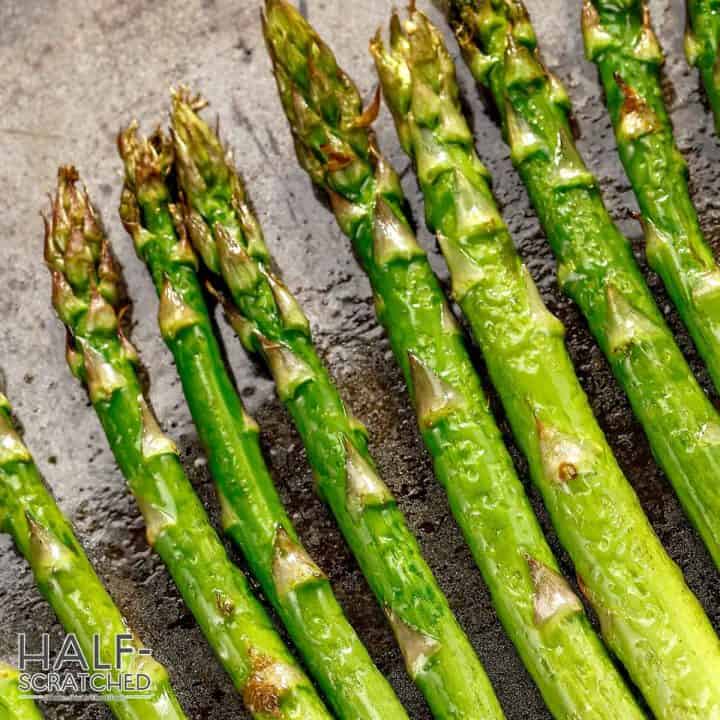
How Long to Bake Asparagus at 400 F
Wondering how to make perfectly baked asparagus? You just have to know how long to cook it!
Ingredients
- 1 pound of asparagus
- 1 tablespoon of olive oil
- ¼ teaspoon of salt
- ¼ teaspoon of black pepper
Instructions
- Preheat oven to 400°F.
- Wash the asparagus and trim off the tough ends by snapping them at their natural break-point.
- Spread the asparagus on a baking sheet and drizzle olive oil over the stalks.
- Sprinkle with salt and pepper.
- Bake for 20 minutes or until the asparagus is tender.
- Serve immediately.
Nutrition Information:
Yield: 4 Serving Size: 1Amount Per Serving:Calories: 55Total Fat: 4gSaturated Fat: 1gTrans Fat: 0gUnsaturated Fat: 3gCholesterol: 0mgSodium: 148mgCarbohydrates: 5gFiber: 2gSugar: 1gProtein: 3g
If you're planning for the holidays or simply want to add a side of asparagus to your Sunday dinner, continue reading to discover more about cooking asparagus. This guide will explain everything you need to know about the vegetable and how to cook it, as well as introduce a few top tips for creating a delicious meal.
400° Fahrenheit is the Ideal Temperature for Roasting Asparagus
Although many recipes recommend pre-heating your oven to 350° or 375° F, we recommend cranking it up to 400° F instead. This higher temperature will help to roast the vegetables rather than simply baking them, causing the natural sugars to caramelize and create a sweeter, richer flavor. It will also help with the texture.
When you boil or steam asparagus, it tends to get stringy and slimy. This is because the heat causes the cells in the vegetable to break down, releasing their contents. However, when you roast asparagus at 400° F, the cell walls don't break down as easily.
This means that the asparagus will retain its firm texture and won't turn into mush. If roasted correctly, it may even have a nice char and crispy exterior. If you're not keen on a bit of crispiness, simply reduce the cooking time or check on the vegetables after the 15-minute mark.
Should You Wrap Asparagus in Aluminum Foil Before Baking?
Deciding whether or not to use aluminum foil is a personal choice and one you should come to based on your preference for texture. There's a general misconception that wrapping foods in aluminum foil helps them to cook faster. This is partially true because the foil does trap heat against the stalks but it also traps air.
As the air heats up, it changes into steam, which will drastically change how your asparagus turns out. When asparagus is cooked in foil, it doesn't have the chance to develop a crispy exterior. If you're looking for asparagus with a bit of crunch, don't wrap it in foil. If you're looking for asparagus that's soft and tender, wrapping it in foil will help to create this effect.
The foil will also help to keep the asparagus moist, which is why it's often recommended for cooking fish. If you do decide to use foil, make sure to use a heavy-duty option. Regular foil is thin and will tear easily, leaving your asparagus exposed to the heat. This could cause it to dry out or even burn.
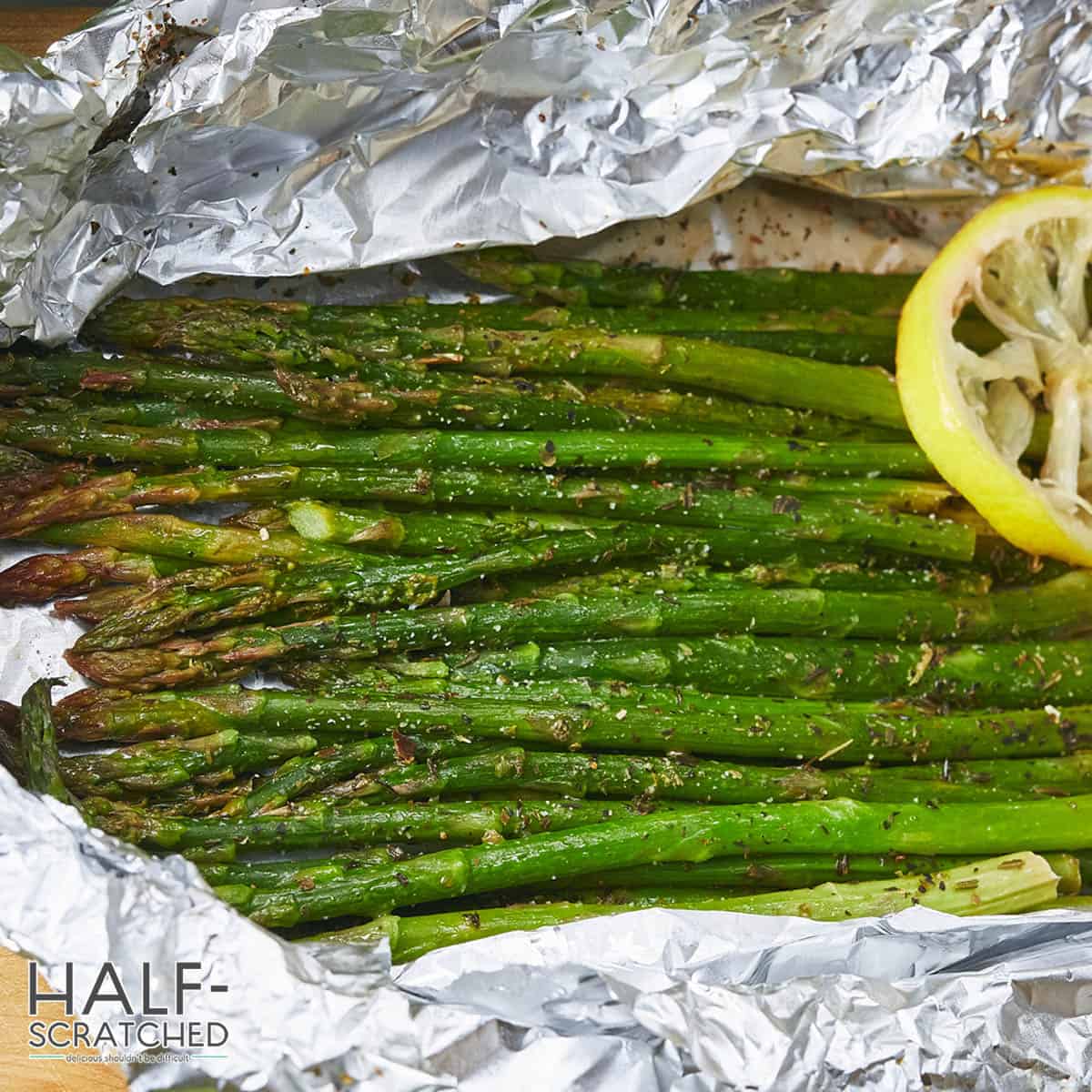
Eating Raw Asparagus in a Salad
If you're looking for a crunchy, healthy addition to your salad, asparagus is a great option. Unlike other vegetables, asparagus doesn't need to be cooked to be eaten. It can be eaten raw, which is good news if you're short on time or simply don't want to turn on the oven.
If you do decide to add raw asparagus to your salad, make sure to cut it into small pieces. This will make it easier to chew and prevent you from swallowing large chunks whole. You should also consider massaging the asparagus before adding it to your salad. This will help to tenderize the stalks and make them easier to eat.
To massage asparagus, simply place the stalks on a cutting board and use your hands to gently press down. You can also use a knife to shave off thin slices of asparagus, which will also help to tenderize the vegetable. Also, be sure to wash your vegetables before eating them raw to prevent any bacterial contamination.
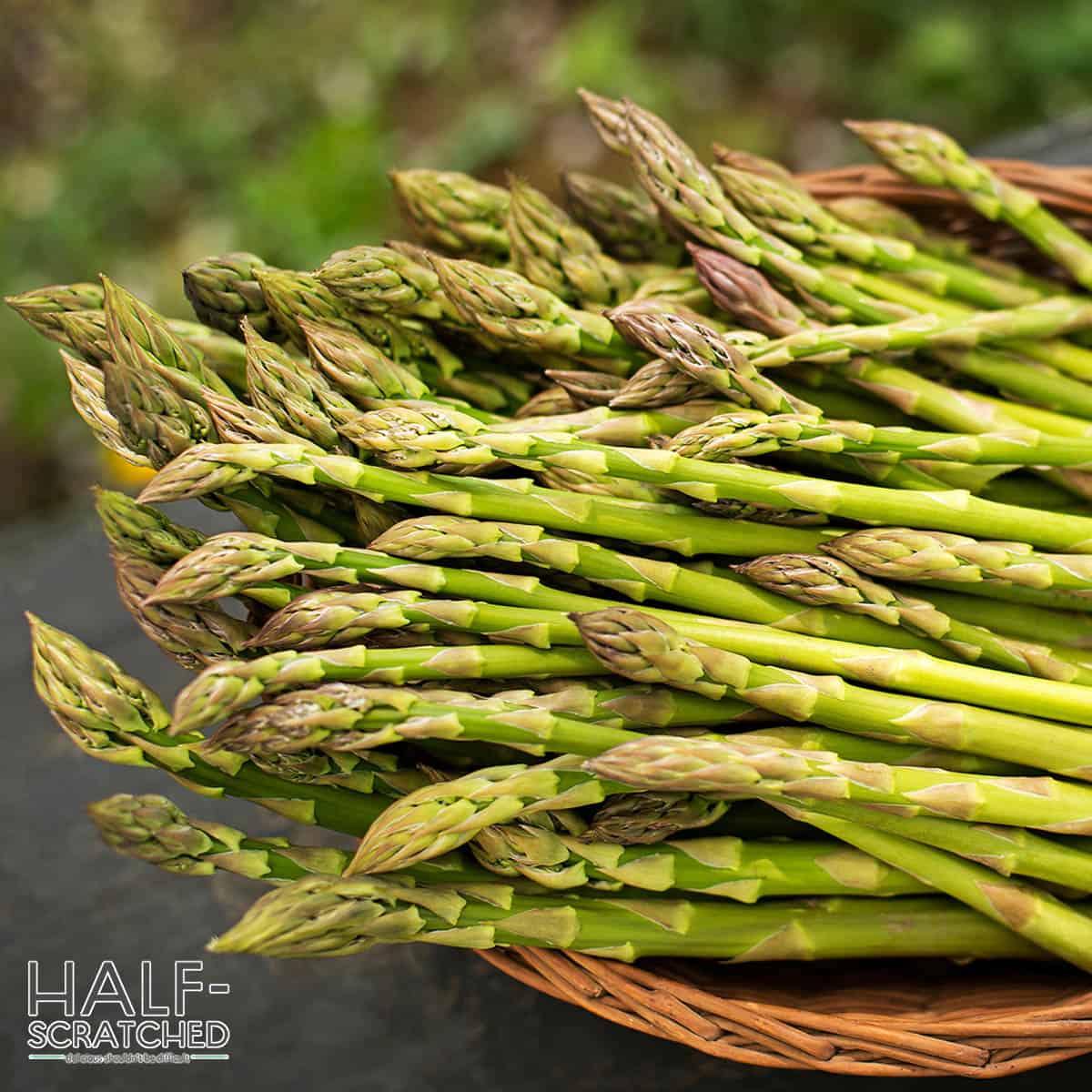
Cooking Asparagus in an Air Fryer
Air fryers are a relatively new kitchen appliance that has become increasingly popular in recent years. They work by circulating hot air around the food, which helps to cook it evenly. Air fryers are often used to cook frozen foods, such as French fries and chicken nuggets. However, they can also be used to cook fresh food, such as asparagus.
When cooking asparagus in an air fryer, you don't need to add any oil. The hot air will circulate around the asparagus and cook it without needing any additional lubrication. You can also cook asparagus in an air fryer without wrapping it in foil. This will help to create a crispy exterior.
If you're using an air fryer for cooking asparagus, make sure to cut the asparagus into small pieces. This will help it to cook evenly and prevent it from falling through the holes in the basket. You should also consider pre-heating the air fryer to ensure that the asparagus cooks through properly. Simply set it to 400° F and cook for 7 minutes.
In a Rush? Cook Frozen Asparagus!
If you're in a hurry, you can cook frozen asparagus. This is a great option if you're short on time or forgot to buy fresh asparagus. Frozen asparagus is also a great option if you're cooking for a large group of people because it's often sold in bulk.
When cooking frozen asparagus, you don't need to thaw it first. Simply place it in the oven and cook according to the recipe instructions. You may need to add a few minutes to the cooking time to account for the fact that the asparagus is frozen.
You can also cook frozen asparagus in an air fryer. Simply place the asparagus in the basket and cook for 7 minutes at 400° F. If you're in a hurry, this is the quickest way to cook asparagus.
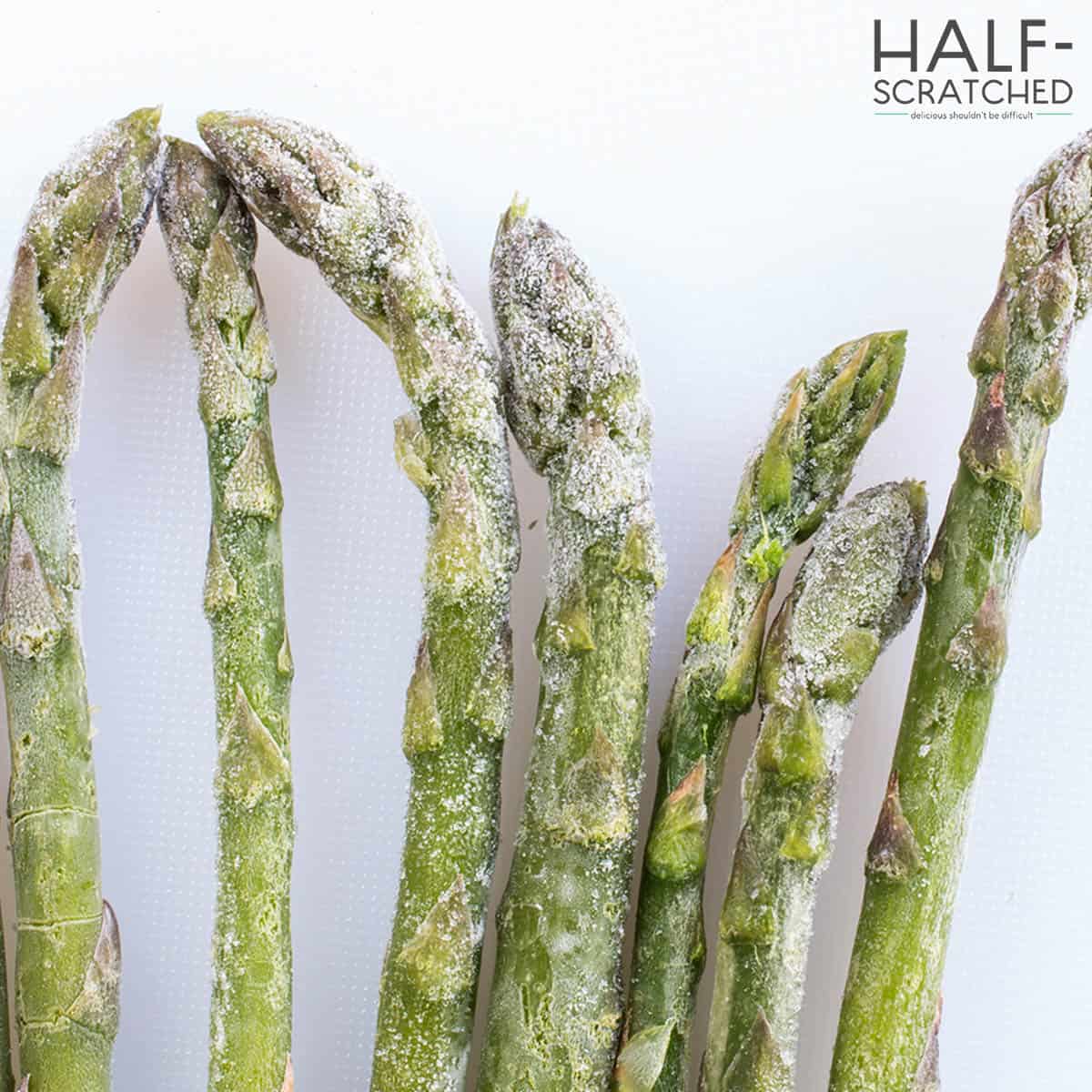
Achieve the Perfect Texture
One of the main complaints people have about asparagus is that it can be chewy and woody. This is often caused by overcooking the asparagus or not cutting it properly. When asparagus is overcooked, the cell walls break down and release their contents. This makes the asparagus slimy and mushy.
To avoid overcooking asparagus, it's important to keep an eye on it while it's in the oven. Set a timer for 5 minutes less than the recommended cooking time and check on the asparagus regularly. You can also insert a fork into the thickest part of the stalk. If it slides in easily, the asparagus is cooked. If it feels tough, it needs to be cooked for longer.
Not cutting the asparagus properly can also cause it to be chewy and woody. When asparagus is cut incorrectly, the tough, woody ends are left intact. These can be difficult to chew and often get discarded.
To avoid this, simply grab the asparagus by the head of the stalk and bend it until it naturally snaps in half. The asparagus will break where it's naturally softened and you'll get a perfect result every time.
My Personal Tips for Roasting Asparagus
Before we introduce our recipe for delicious and perfectly baked asparagus, we wanted to run through a handful of top tips to help you get the best results every time. Apply them as you see fit and experiment with your cooking process to find your own preferred method.
- Look for Thicker Asparagus Stalks: If you're planning to roast your asparagus, we recommend looking for thicker stalks. These will be less likely to overcook and will have a more robust flavor. They may be more prone to woodiness but you can simply snap the bottom half of the stalk off and enjoy the younger, softer tips.
- Season Your Asparagus: Although asparagus doesn't need a lot of seasoning, we recommend adding a bit of salt and pepper before cooking. This will help to bring out the natural flavors of the asparagus and make it more palatable. You can also experiment with other seasonings, such as garlic powder, onion powder, and dried herbs.
- Consider Adding Oil: Although you don't need to add oil to asparagus, it can help to create a crispy exterior. Simply drizzle a bit of olive oil or avocado oil over the asparagus before cooking. This will also help to prevent the asparagus from sticking to the baking sheet.
- Pre-Heat Your Oven: To get the best results, we recommend pre-heating your oven before cooking the asparagus. This will help to ensure that the asparagus cooks evenly and doesn't dry out. Simply set your oven to 400° F and let it pre-heat for 10-15 minutes before adding the asparagus.
- Cut the Asparagus into Small Pieces: If you're cooking asparagus in an air fryer, we recommend cutting it into small pieces. This will help it to cook evenly and prevent it from falling through the holes in the basket. You can also cut the asparagus into small pieces if you're planning to add it to a salad.
- Don't Overcrowd the Baking Sheet: When cooking asparagus in the oven, make sure to spread the stalks out on the baking sheet. If they're too close together, they won't cook evenly and will produce uneven results. We recommend using a baking sheet that's large enough to accommodate all of the asparagus without overcrowding.
- Check on the asparagus Regularly: To prevent overcooking, we recommend checking on the asparagus every 5 minutes or so. Simply insert a fork into the thickest part of the stalk. If it slides in easily, the asparagus is cooked. If it feels tough, it needs to be cooked for longer.
If you're comfortable experimenting with flavors, you can also try adding lemon, honey, or even nutmeg to mix things up!
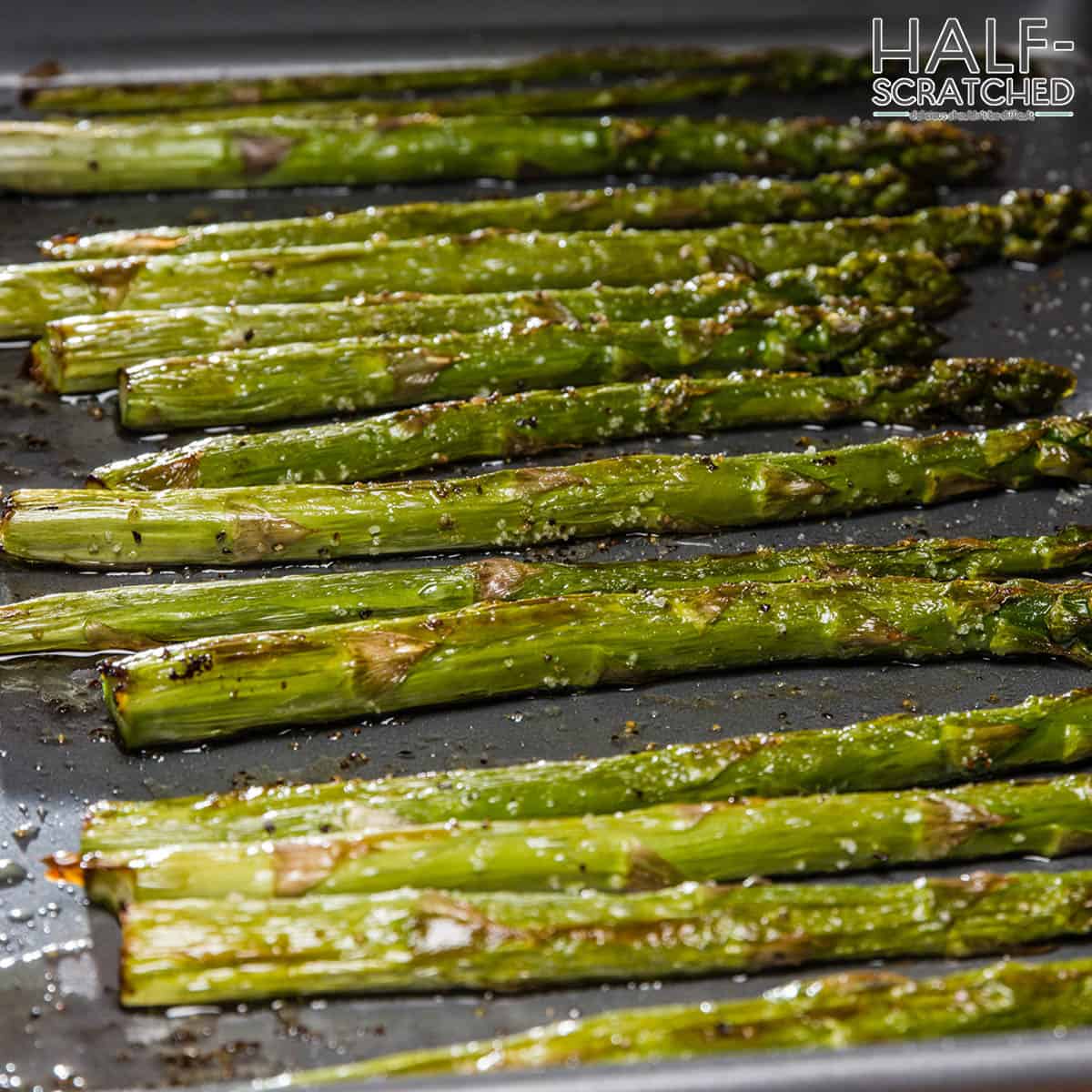
Frequently Asked Questions
Asparagus is a native plant from the Mediterranean and was first cultivated in Greece. It's been a popular and stable vegetable in the region for nearly two thousand years and can be grown nearly year-round thanks to the region's warm and temperate climate.
Asparagus is a low-calorie vegetable that's packed with nutrients. It's a good source of fiber, vitamins A, C, and K, and folate. It also contains a compound called inulin, which is a prebiotic that helps to promote the growth of healthy gut bacteria.
Asparagus is a delicate vegetable and should be eaten within a few days of purchasing it. If stored properly in the refrigerator, asparagus can last up to a week. However, it's best to eat it as soon as possible for the best flavor and texture.
Asparagus is often called a vegetable. This is because it's the edible part of the asparagus plant that's used as food. However, technically, asparagus is a fruit because it contains the plant's seeds, just like how a tomato is technically a fruit.


Leave a Reply